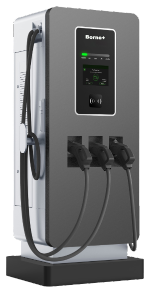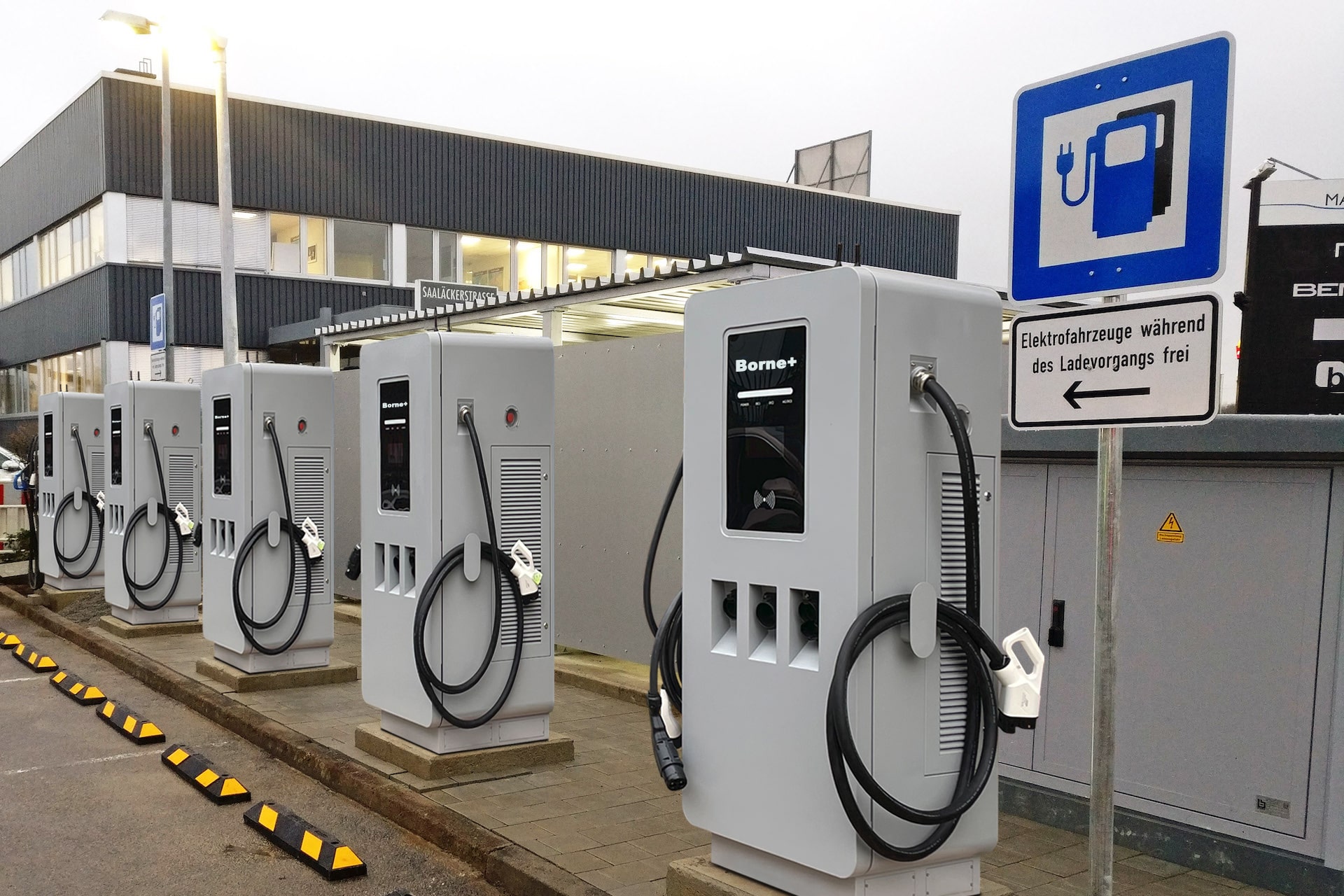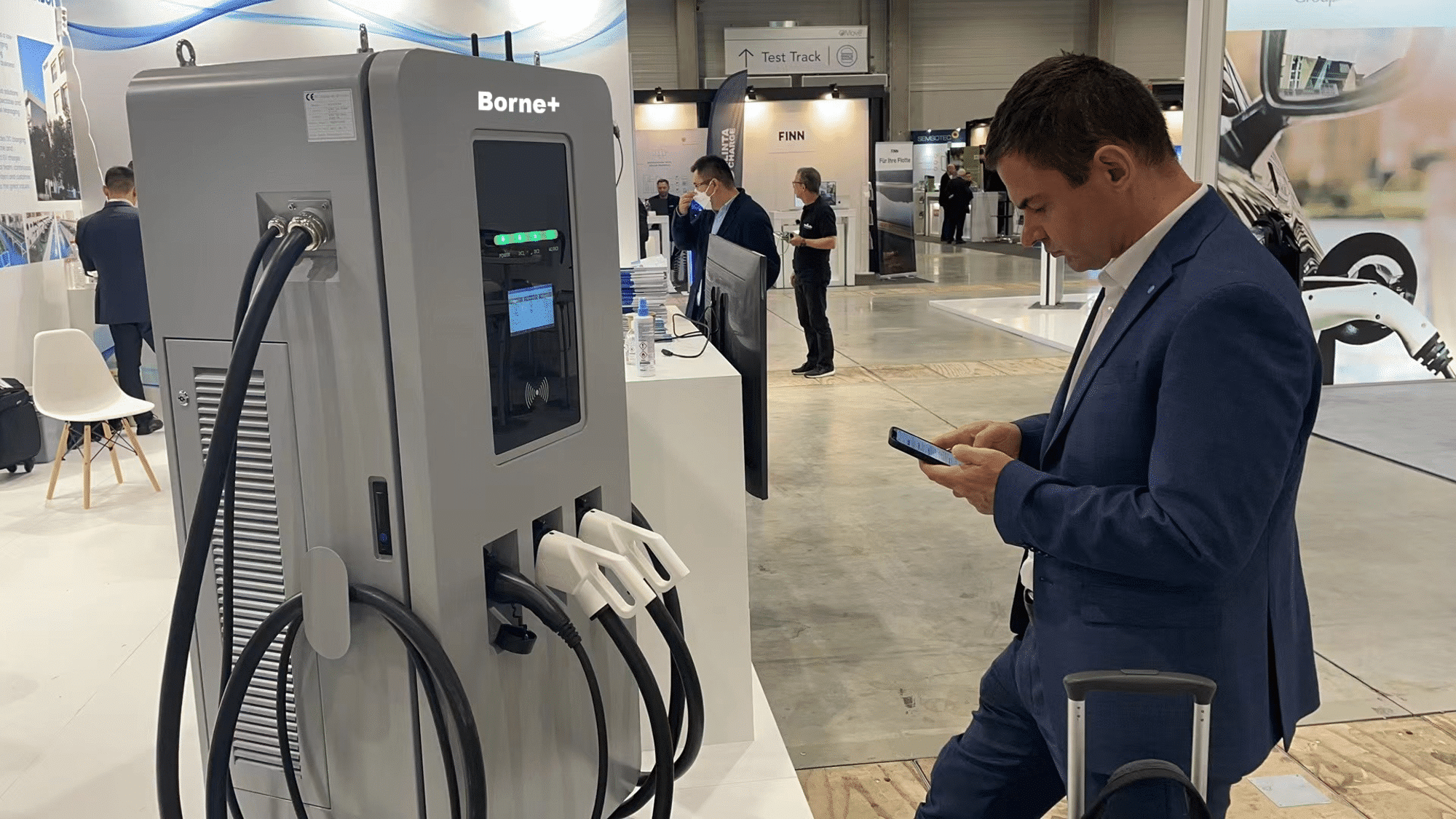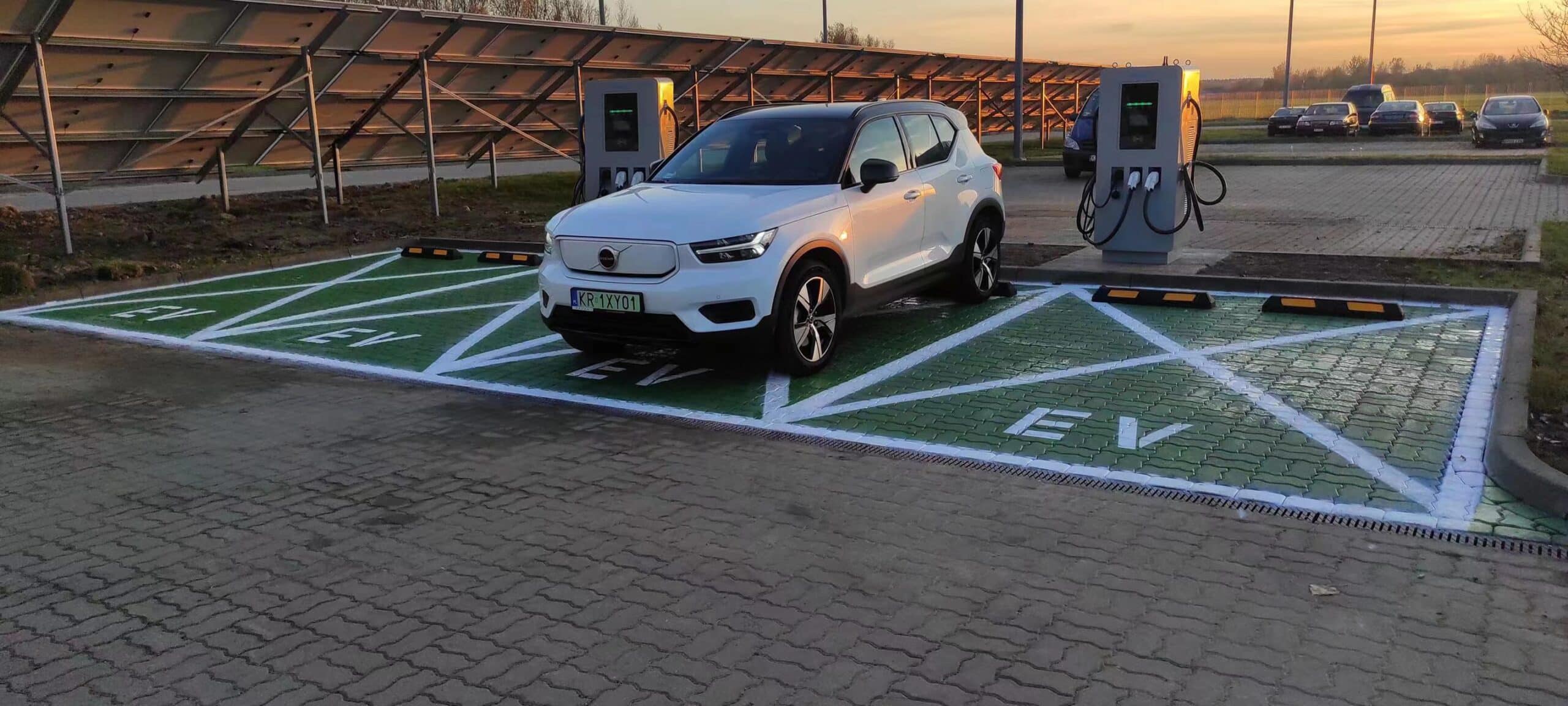
60/90 kW DC CCS2 Charging Station
LED color touch screen Up to 90 kW charging power 2x125A Phoenix connector Internal communication via CAN/RS485/RS232 Mounting plate, cable support and screws included Configurable charging power Protection IP55/IK10 OCPP platform Detection and protection of leaks, emergency stop button. Communication via Wi-Fi / 4G / RFID / OCPP1.6J – 2.0 Double detection and protection of leaks, emergency stop button. Under voltage and over voltage protection
PERMANENT STOCK
Shipped under 24H
Compatible with all type 2 electric cars
Are you looking for an efficient and inexpensive charging solution to buy and operate? The 60KW Borne+ charging station offers the best compromise between ergonomics, price and performance for electric cars and plug-in hybrids at home. Thanks to its robust design and its intelligent electronic system with integrated wifi, this versatile terminal will make you gain in autonomy and comfort through its many options including start-up by card, control by mobile application, and its LED interface with color screen. .
Additional information
| Niveau de protection | Protection IP55/IK10 |
|---|---|
| Puissance de sortie maximale | 90KW |
User Manual
Datasheet DC : Click here to download
14 days to change
your mind

1 year manufacturer
warranty
24h
Shipping
The characteristics of
a 60 kW DC charging point
A 60 kW DC charging point differs from conventional charging points in a number of ways :
High charging power
It transmits 150 kilowatts of direct current charging power to an electric car, allowing the battery to be fully recharged in 15 to 45 minutes, depending on the type of vehicle.
Compatibility
It features a CCS (Combined Charging System) or CHAdeMo connector that can be used with most electric vehicles, including buses, trucks and even electric two-wheelers.
Adaptability
This fast-charging station works with all types of electricity networks, so it can be used without constraint, whatever the conditions.
The charging connector
It is often made up of CCS2 (Combined Charging System) connectors, which are suitable for most European and American electric car models.
Availability
Fast-charging stations are available just about everywhere, including shopping centres, motorway rest areas and service stations. At the end of September 2022, there were around 71,630 public charging points in France.
You can find them easily by visiting specialist websites, dedicated mobile applications, location platforms, recharging network websites or local authority websites. Most DC 60 kW charging points are connected to the internet so that motorists can locate them and check their availability.
How does a 60kW DC terminal work ?
Understand the differences between alternating current and direct current to optimise rapid charging of your electric vehicle.
To understand how a charging point that uses a direct current (DC) power supply and delivers up to 60 kW of power works, it’s first important to understand the different types of current used in electric car charging points.
Alternating current (AC) is an electrical current that constantly changes direction. It can be produced by renewable energy sources that use rotating generators (hydroelectric turbines or wind turbines). It can be transmitted over long distances, which is why it is used by all electricity networks and can reach your home.
Direct current, on the other hand, always takes a single direction. It can be produced by renewable energies such as solar panels and is generally used for LED lighting or energy storage. Batteries are part of the equipment that stores DC electricity.
When an electric vehicle uses an AC charging point, the current flows into the point and is converted by the car's on-board charger so that the electricity is stored as direct current in the battery. But when using a DC charging point, the conversion takes place in the charging point via the transformers on board the charging point. Once converted, the DC current flows directly from the station to the battery, hence the fast charge. The charging time required for a full charge decreases considerably depending on the size of the converters. Some DC charging points can generate up to 350 kW of power, enabling an electric car to fill up in a quarter of an hour. The 60 kW DC charging point offers good performance.
Possible locations for
a 60 kW DC charging point
Electric vehicle users can find a DC 60 kW charging point at various locations :
Free recharging points
They are often available in the car parks of shopping centres, large hotels and restaurants, or well-known shops. They can also be installed in partnership with car manufacturers or major retailers.
Motorway charging points
Charging stations are also being installed all over the motorways, making them indispensable for motorists on long journeys. Up to the end of June 2022, the ASFA (Association des Sociétés Françaises d'Autoroutes) has counted 800 recharging sites, more than 50% of which are for very high-power fast charging. The charging points are easy to use. All you need to do is plug in your car using the appropriate cable. To pay for the battery charge, you can use your bank card or your subscription card (taken out with a mobility operator).
Charging points for condominiums
Tenants also have the option of installing a DC 60 kW charging point, subject to approval by their property manager. In the case of a collective charging point, use will be shared between the tenants. In the case of an individual charging point, the person concerned can take advantage of the ‘right to a plug’.
Company charging points
Since 2010, employees have had the right to recharge their electric vehicles at work, which means that employers are obliged to pre-equip their company car parks. This regulation applies to those working in the tertiary and industrial sectors.
Installing a charging point
60 kW charging point at home
Find out about the conditions, costs and steps involved in fitting your home with a rapid charging point.
Installing a recharging point at home: a possible option?
Private individuals can install a 60 kW charging point in their home, but only under certain conditions. You need to know whether your domestic electrical installation is capable of handling such high power. If you have a three-phase power supply, which 60 kW charging points require, this is still an option.
However, 60 kW charging points are quite large, given that they are intended for commercial use. For domestic use, you need to have enough space for it. Finally, cost is another constraint. As this type of chargepoint is dedicated to fast charging, it is fairly energy-intensive, not to mention the price of the equipment and the cost of installation by a specialist.
Who can install a 60 kW DC charging point?
Wherever the bollard is located, it's essential to leave the job to a professional. This could be a qualified electrician or a certified installer. Only an expert can guarantee service, work that complies with standards and safe use for motorists. Alternatively, the manufacturer of the charging point itself may offer the service of installing and commissioning the charging point.
In all cases, it is essential to make sure that an authorisation or permit has been issued by the local authorities for the installation of the equipment. Some local authorities may require an inspection to ensure that the installation complies with local and national standards. To find out how much the installation will cost, you need to consider the price of the bollards and the installation costs. To get an idea, the price of a basic 50 kW charging point is around €50,000. The higher the output, the greater the investment. If you use the services of a level 3 IRVE installer, the price will be higher than that of a level 1 or 2 specialist. You also need to take into account the specific technical constraints that the professional will have to deal with, which will add to the overall cost of the installation.

You can choose to charge the vehicle
On public charging stations, which are stations installed in public places (car parks, rest areas, etc.). They are powerful electrical load carriers and accessible to the general population. On the other hand, they are too often saturated due to a weak distribution in large agglomerations. At home charging stations, which are private and personal charging stations for charging the battery at home. This solution is more suitable for people who want to load their cars with more freedom.

Comfort of recharging
With Borne+’s 60KW charging station, you can enjoy the convenience of home recharging and avoid long lines and wasted time at public stations. It allows you to feed your battery during your off-peak hours or during the night in order to leave in the morning with a full recharge. The 60KW charging station is equipped with a Type 2 plug (also called Mennekes Charger) that fits the vast majority of electric cars circulating in Europe and France.
CONTACT US
Call customer service for specific information
Looking for information about our charging stations?
Visit our frequently asked questions or go directly to the support section by calling +33 01 45 84 80 81.
You can also send an email or a letter to the following addresses :
An active and competent customer service will answer you in a short time to bring clarifications on the product.
You can also download the manual of the 22KW charging station with cable or without cable, as well as the complete user’s manual of the Wifi function for more details on the product and its operation.





